► Tesla’s super-powered Model S Plaid driven in the UK
► Claims a 0-60mph time of 1.99 seconds
► Available in left-hand drive only
Is the Tesla Model S Plaid one of the most talked-about cars in recent history? It has to be up there, in terms of electric cars at least right? Not least because it comes from one of the car industry’s most talked-about brands… for all the good and bad reasons you can think of.
But that huge amount of buzz is warranted. Tesla’s prowess when it comes to electric powertrains is still nigh-on unmatched, and having an all-electric executive car that can cut it with some of the fastest cars in the world is a headline unto itself.
So, finally, we’ve driven the new Tesla Model S Plaid in the UK. Keep reading for our full review on the most powerful Tesla yet.
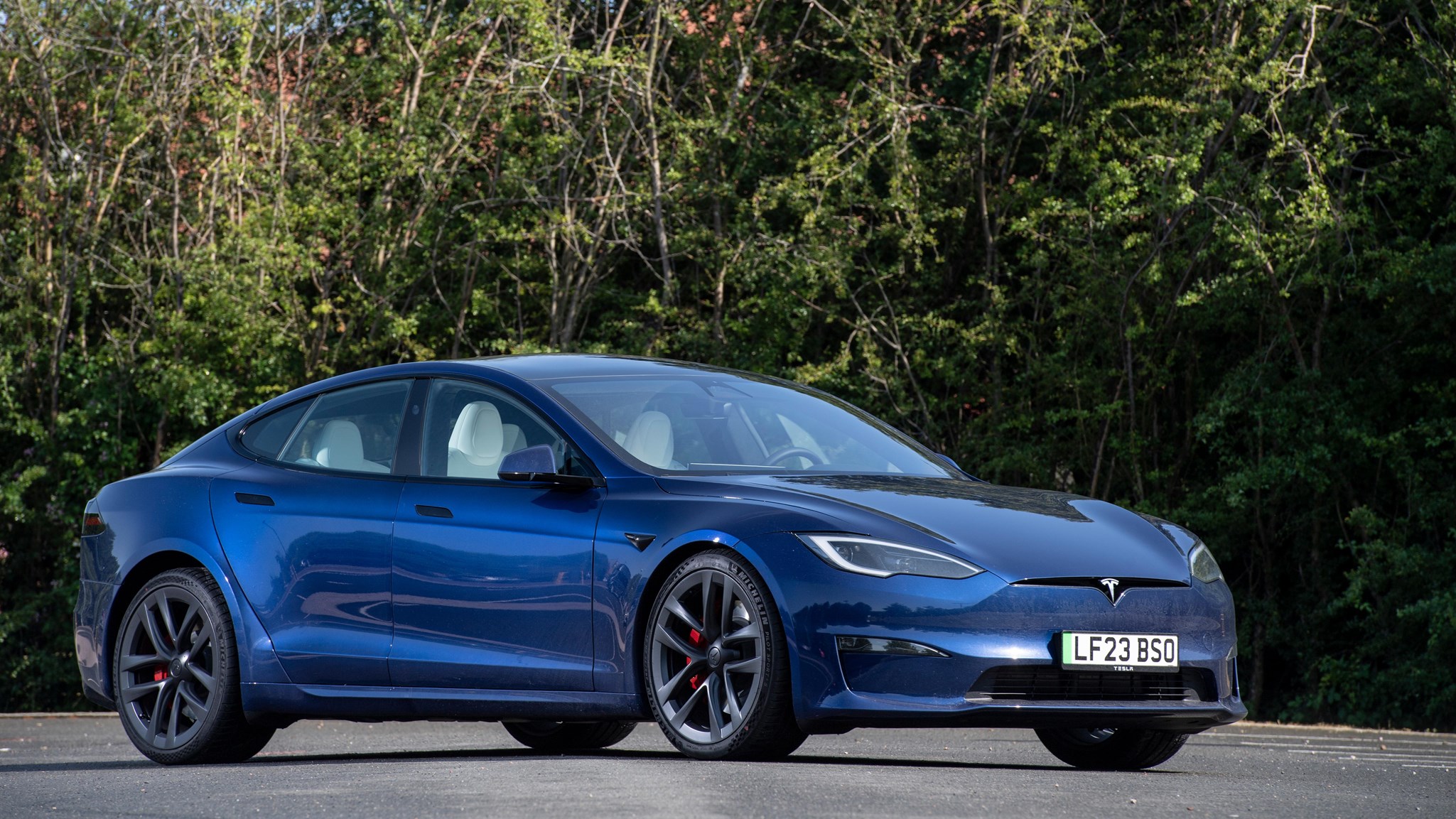
What’s new with this Model S Plaid?
The new, high-performance Model S replaces the Performance variant and arrived with the car’s latest facelift. As well the exterior of the Model S getting a thorough going over (including new wheel designs, front and rear bumper redesigns and better aero) with the facelift, the bigger changes are inside.
Material quality has definitively improved over prior Model S generations. But that’s arguably damning it with faint praise – especially when comparing against other cars that are around the rough £115k entry price for a Model S Plaid. The BMW i7 – a grandiose EV that competes with the Model S in terms of its size and price if not directly in performance – feels almost palatial in terms of design and build quality compared to the Plaid. Space is good, meanwhile, with comfortable rear seats and an impressive load area (helped by the hatchback rear end, unlike the Model 3).
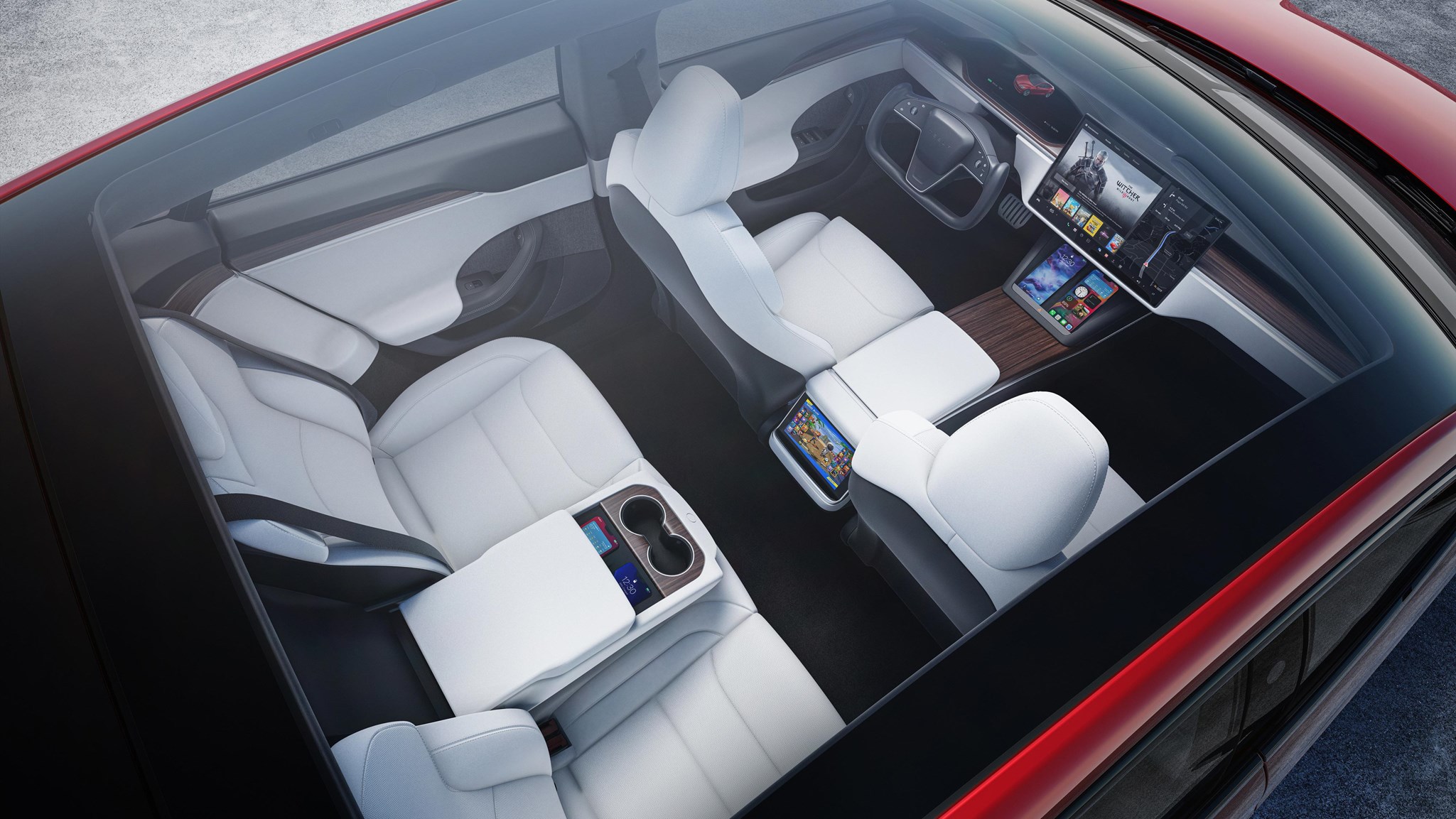
Naturally, though, the focus of any Tesla interior is the technology on board. The driver’s instrument cluster remains resolutely familiar, complete with its animated visualisation of what the car sees ahead of it. The bigger difference is the central screen; gone is the portrait one inset into the dashboard, replaced by a 17-inch widescreen display that can be angled towards the driver or passenger or inset into the dashboard. It comes with all the usual software niceties Teslas always have (the ability to stream content from a number of platforms, for example, as well as the opportunity to mess around with all the games and daft programs in the Toy Box), and the screen itself is super slick and responsive.
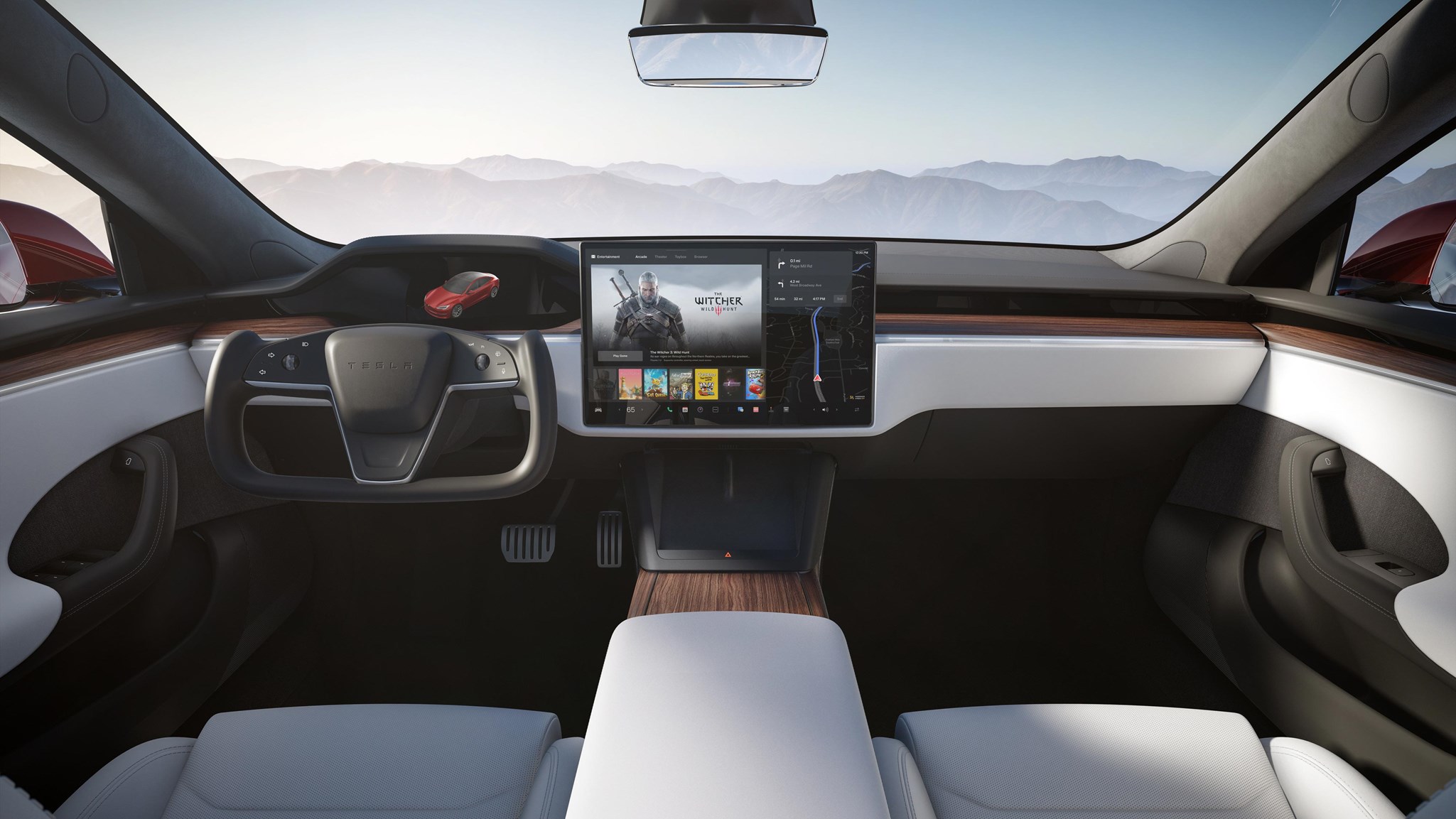
As always, though, the infotainment system is a bit… busy. Once you’re in the rhythm with how it all works, it’ll become less daunting to use, but it’s definitely a system we recommend getting all your settings right on before you drive, or relying on a helpful passenger to fill the role of navigational/musical co-pilot as you drive.
There are some bigger quirks, however. Tesla’s addiction to using everything on a screen has removed the use of any stalks or shifters. You indicate, use the wipers, horn or headlights via haptic buttons on the steering wheel (yes, wheel – the much-mooted yoke is, thankfully, optional), for example. But the bigger drama? You shift into drive or reverse using the left-hand edge of the central screen – which feels massively unnatural. And, for those shouting at the screen asking about what happens if the screen doesn’t work… there are some hidden PRND touch buttons flanking the hazard warning light button on the centre console.

The biggest gripe with the interior, though? The fact that, as of now, every Model S is left-hand drive. Not helpful for us UK lot or, indeed, anywhere else that has right-hand drive car. That in itself knocks off some practicality points here in the UK, particularly if you’re planning on using this as your daily driver – rendering toll booths, parking barriers and drive-thrus (among other day-to-day access points) inaccessible/immensely awkward unless you have a willing or able passenger.
Why is it called Plaid?
It’s a joke (and a very old one at that) in reference to the Star Wars parody, Spaceballs. As the movie’s protagonists are chased through hyperspace by Dark Helmet and his evil empire, the chase goes from regular light speed to Ludicrous speed (sound familiar?) and then into Plaid speed. ‘Going into Plaid’ is brought to life by a red and orange plaid pattern running across the screen.
Gets funnier when the joke’s explained, doesn’t it?
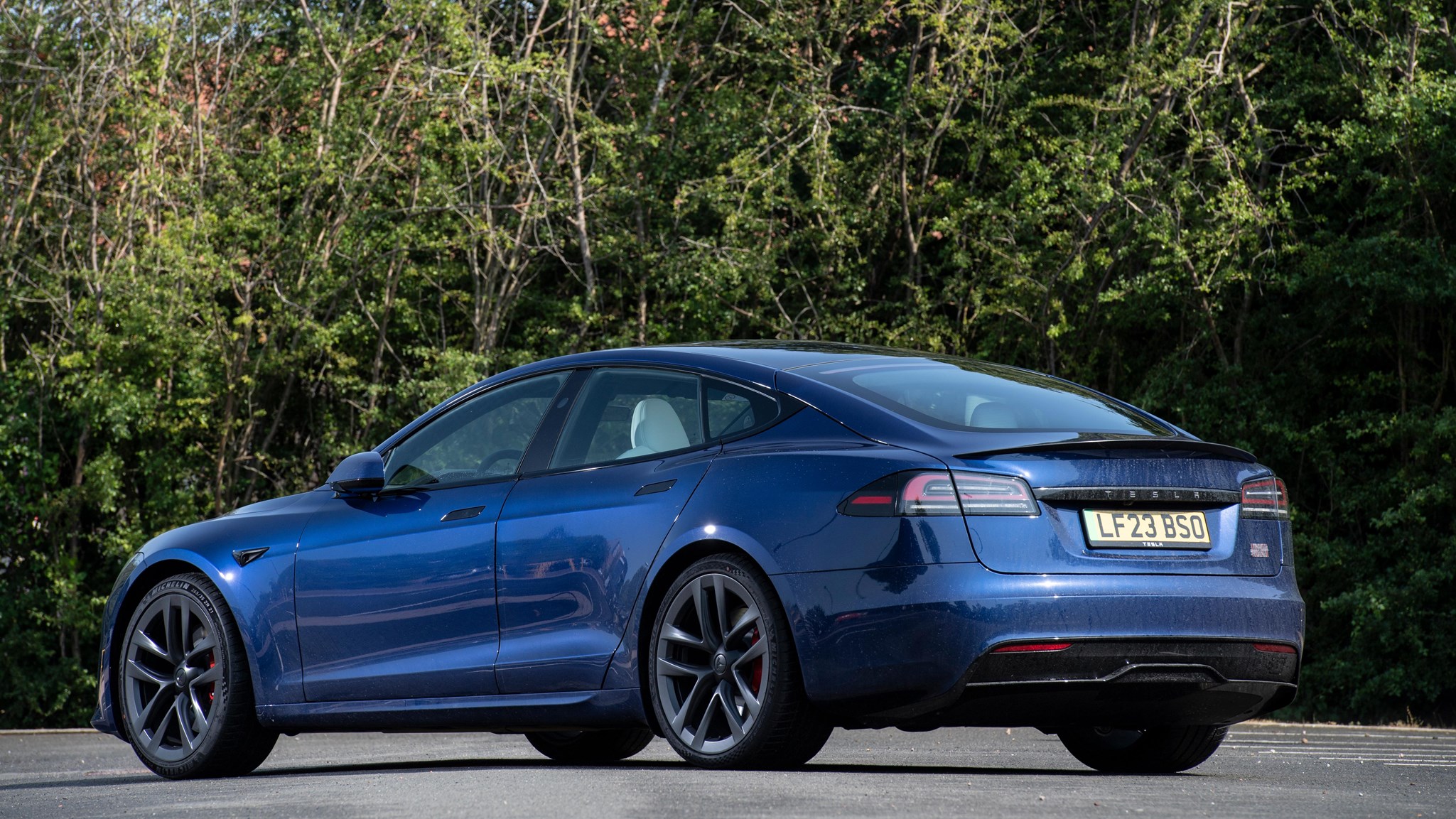
Uh huh… So, how fast is the Plaid… really?
Well… because we’re talking about Tesla here, things are naturally a little more complicated than they appear. Even if you flick through Tesla’s website, you’ll spot endless asterisks over some of the Model S Plaid’s claims, with the most glaring one regarding that 1.99-second claimed sprint time.
As well as being a 0-60mph time (rather than a more internationally accepted 0-62mph sprint), the 1.99-second quote removes the rollout from the standardised 0-60mph measurement in which a car actually moves about a foot forward before triggering the start of speed traps. Some say that can add up to 0.3 seconds to a time if included.
But we’re quibbling here: a circa-two-second sprint time puts the Plaid up there with the likes of the Rimac Nevera, Pininfarina Battista and the most potent version of the Lucid Air, making it among the quickest-accelerating cars in the world. So much so that the Model S Plaid holds the lap record for the fastest production electric vehicle at the Nürburgring. It first toppled the Porsche Taycan Turbo S in 2021 with a 7:35.579 lap, then trounced its own record in June 2023 (with a set of performance upgrades Tesla calls the Track Package) with a new record of 7:25.231. None of this is something to be sniffed at.
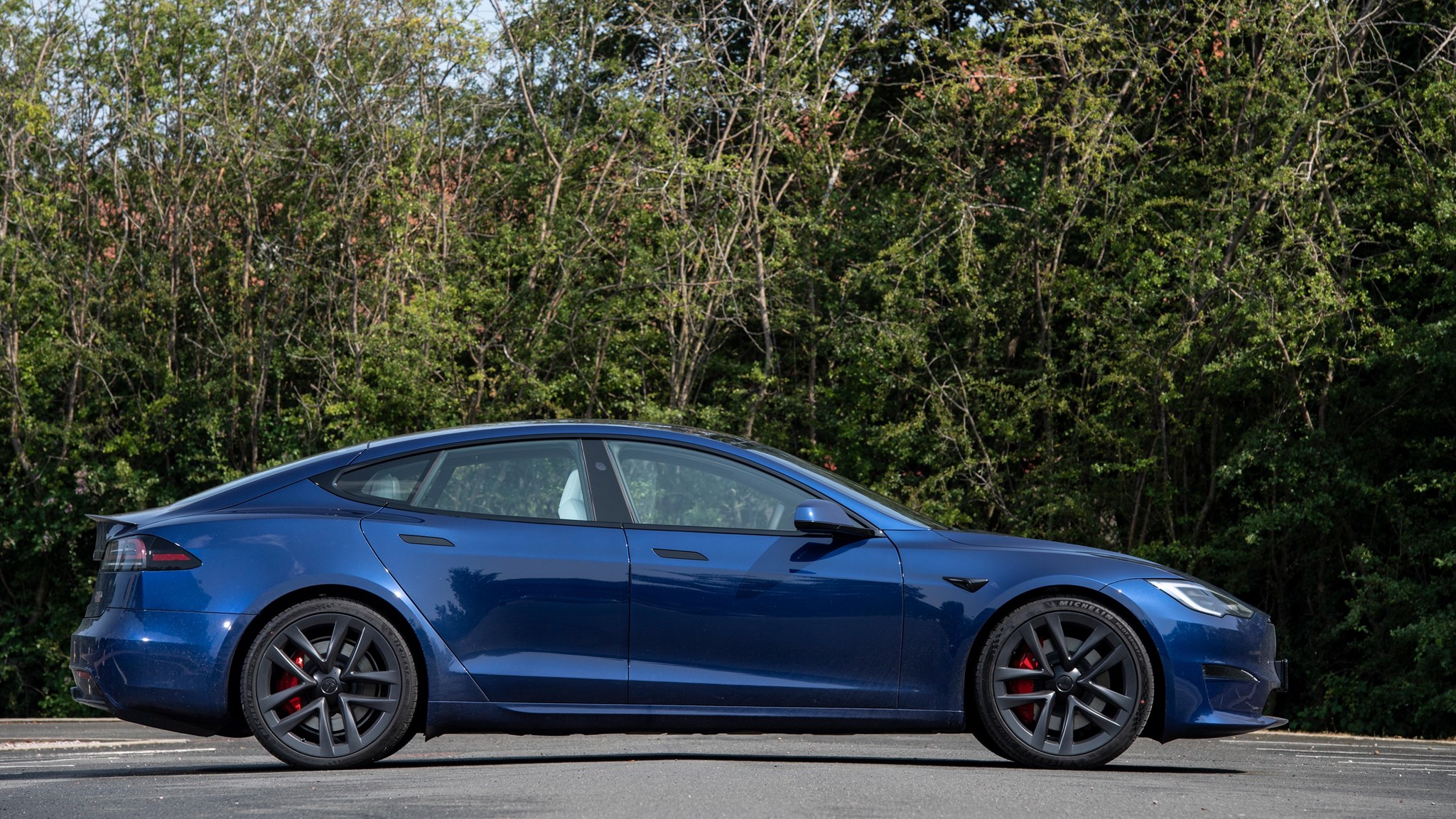
There are three acceleration modes available: Chill, Sport and Plaid as well as a ‘drag strip mode’ for the perfect launch every time. And, in reality, there’s no getting around the fact that the Model S Plaid feels quick with a capital F.
Even without using the drag launch tech, the Plaid acceleration mode is a pure gut punch, with even fiercer acceleration than some of the world’s best launch-start roller coasters. It’s almost supernaturally fast, silently launching itself into the distance with such ease that, if you so much as twitch your foot on the throttle at any time in Plaid mode, all of that 1000+bhp is supplied to you in an instant. It’s utterly startling the first few times you floor it and a pure hit of adrenaline when you do, and it’s accompanied by a hyperspace animation in the driver’s instrument cluster whenever you floor it.
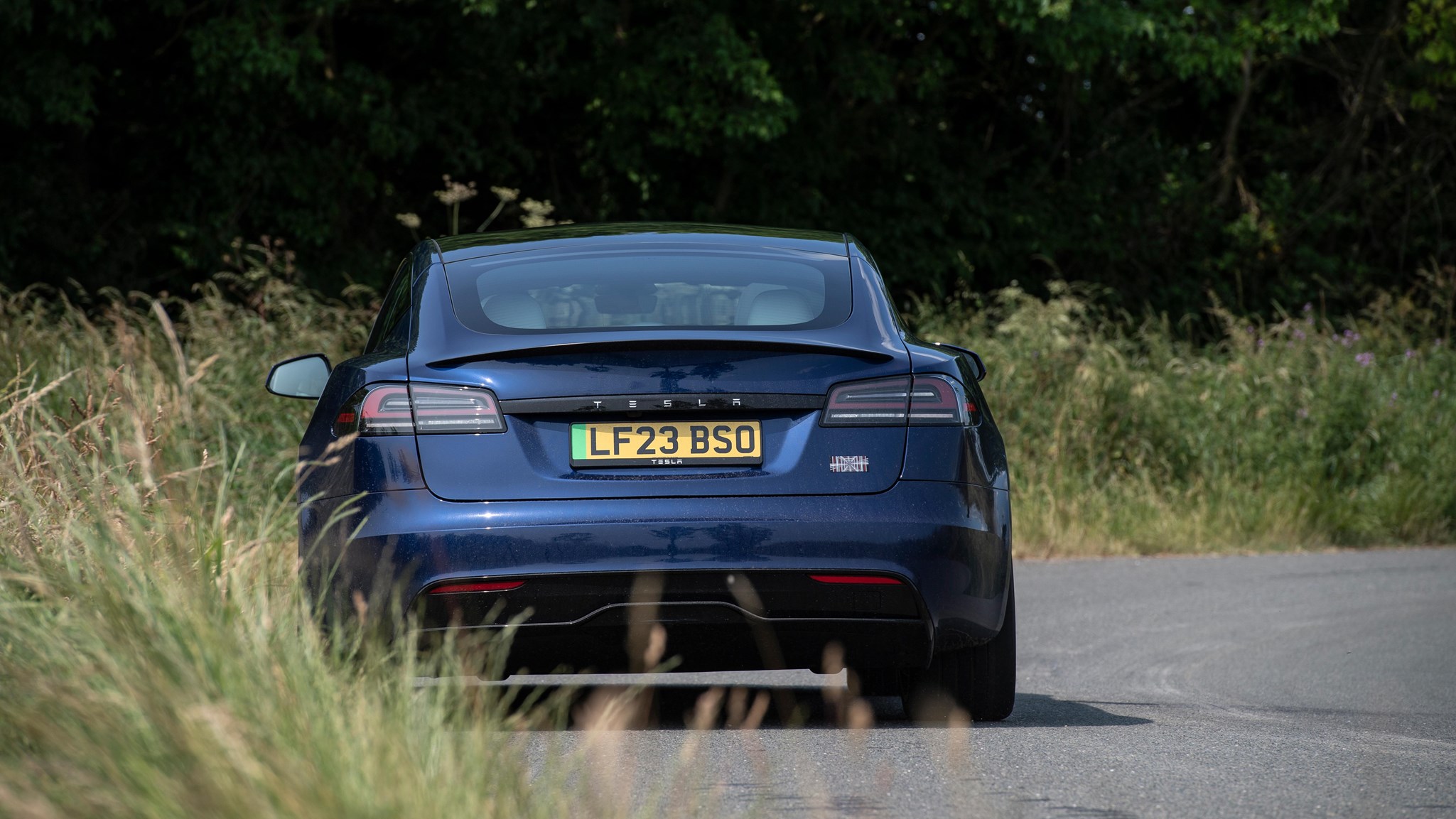
The trouble is, like any fast-accelerating EV, you do it a handful of times before you then flick it back to Chill mode and leave it there. The novelty of it wears off fast, not least because there aren’t many places around for you to easily deploy all that power.
What’s the Model S Plaid like to drive?
It’s an interesting mix. The steering, to start off with, has that very familiar artificial-but-direct feel you get from all Teslas. As well as being able to adjust the performance being extracted from your right foot, you can also choose steering weights in the settings menu to suit your needs or the drive you’re on. Regardless, the Model S turns in eagerly even if you’re not getting a lot of communication from the wheels themselves.

Every Model S runs on air suspension which can be raised or lowered at will, and the ride itself treads the thin line between sporty and comfortable pretty well. Not floaty and squishy like a Mercedes EQS or quite as balanced as a BMW i7, but far from uncomfortable. Body roll is controlled well if you’re out for a fun drive on a back road, but the size of the Model S (accompanied by the fact it’s LHD) don’t do much to inspire huge confidence around the twistiest stuff. Ditto the refinement: not quite up there with those £100k+ German rivals and not helped by the Michelin Pilot Sport 4S tyres on our test car, but fine enough for long distances.
Tesla Model S Plaid: verdict
And that’s kind of where we keep butting heads with the Model S Plaid. While you can only order one from stock at the time of writing – the absolute least you’d be paying for one is £115,000. Look at it from a price point of view and the interior quality and refinement don’t entirely stack up against other cars of its ilk, let alone the fact its usefulness is limited in countries that drive on the left like ours.

No, you’re buying a Plaid for that mighty performance and getting the best possible thing you can out of the Tesla ecosystem. A Model S Plaid is the ultimate EV play-thing; capable of squirting up a drag strip or countryside backroad quicker than you can say Elon Musk, streaming whatever you like from it as you hook up to a Supercharger.